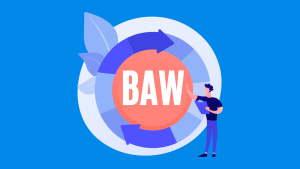
In Part 1 of this series on Automation Alignment, we described an overall approach to fitting the right type of automation to the type of work being done. We discussed the high level of looking at the type of work being done and matching Digital Business Automation (DBA) capabilities to that work. In Part 2 and Part 3, we discussed automated decisions and tasks, respectively, and the type of work they fit with. In Part 4, we’ll focus on the Workflow portion of DBA, indicated in Figure 1 in orange.

Workflow Automation has been around for years and comes in many flavors. Sometimes it is embedded in existing ERP applications such as SAP or Microsoft Dynamics. In these cases, the workflow is typically particular to the processes within that ERP suite and is not meant for highly custom workflows involving heterogeneous systems. Sometimes it is embedded in Enterprise Content Management tools such as Filenet. In the case of ECM, those workflows are meant for highly content-centric workflows, which we will discuss in a later blog in this series. And then there is the highly custom world of workflows which are entirely custom and meant for either Ad-hoc (Case) or Sequential workflows or a combination of both. This type of workflow automation should be used for the core processes at companies. In other words, the processes need to create differentiation for a company. That is about as far as we’ll go into the different types of workflow automation available. This is a vast subject and would require a full white paper or eBook to cover appropriately.
Salient Process is a firm believer well-designed processes and workflows are a fundamental part of making a business great. This should be pretty obvious from our name. However, the question we need to answer for you is when and how best to automate these workflows, which are a foundational part of your business. We feel a formulaic approach is best, although it is strictly a guideline. Management discretion should always be a part of any decisions regarding where best to use workflow automation.
If you read any of the other blogs in this series, you may want to skip to the next section since the following paragraphs are definitions repeated in each blog in the series.
The way we approach making automation decisions is by leveraging an Automation Alignment Matrix (AAM). The Automation Alignment Matrix allows us to analyze the type of work being done and map that to the type of automation recommended.
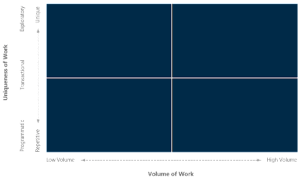
Along the Y-axis, we measure the Uniqueness of Work being done, while the Volume of Work is measured along the X-axis. What we are attempting to do with this matrix is determine where an automation capability best fits into one of the four quadrants based on the type of work being done, with the type of work determined by its uniqueness and volume. There are other factors an organization should take into account, such as assessing the relationship between job performance and strategic value, which will help you determine the return on improved performance (ROIP). ROIP is a subject unto its own, which we may cover in another blog. For a deeper dive into ROIP, read Part 1 -> Step 2 of Reinventing Jobs by Ravin Jesuthasanand John Boudreau.
Before we go too much further, some definitions seem appropriate. Low and High Volume (X-Axis), as well as Repetitive and Unique (Y-Axis), are self-explanatory. However, the Programmatic, Transactional, and Exploratory terms along the X-Axis are less self-explanatory. The definitions for Programmatic, Transactional, and Exploratory are from the MWD Advisor’s article mentioned earlier. These criteria were added to the X-Axis because we felt they added more depth to the matrix. Below are definitions for the three words needing more explanation (somewhat appropriately, the definitions for each of these get longer the less prescriptively the work can be defined up front):
Now that we have these definitions, as we look across a company and begin trying to determine how and what to automate, we can look at things from a process and activity (task) perspective, and take a prescriptive approach to automation. When looking across a business process, it is quite common for all five types of automation capabilities in Digital Business Automation to be needed. However, the job of our Automation Alignment Matrix is to help us narrow down automation for specific types of work. We can also leverage a tool like IBM Blueworks Live to model out our processes and analyze what type of work is being done. This will prepare us to use the Automation Alignment Matrix since we’ll have classified the work as either Exploratory, Transactional, or Programmatic.
In figure 3, we have a purely fictional hiring process. We have color-coded the activities within the process to correlate with the different types of work (i.e. Exploratory, Transactional, and Programmatic). By leveraging this color coding in combination with the Automation Alignment Matrix, we have the starting point for prescriptive guidance in determining where to leverage different types of automation.
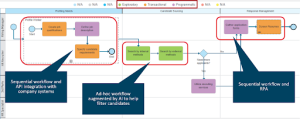
Our objective in this blog is to look at Workflow Automation in the context of all three types of work.
Given Programmatic work is defined as work that can be prescribed and designed in detail in advance, and the w
ork can be almost entirely automated, Workflow is typically not the best fit here. This type
of work generally is best for Unattended RPA, Integration through APIs, Intelligent Data Capture,
and Decision Management. Usually, Programmatic work ends up getting leveraged downstream from Transactional and Exploratory work. In other words, the Programmatic work is a subset of work being done as part of a larger workflow or process. This is part of the analysis which needs to be done when looking at any business process.
In Figure 4 we can see the Workflow icon represented in the quadrants corresponding with Programmatic work. What we’ve tried to represent with the Workflow icon, and the RPA, Decision, and Data Capture icons, is in the case of Programmatic work, Workflow is not typically the main player. It may orchestrate other Automation capabilities such as RPA, Decisions, and Data Capture, but it isn’t the main driver. However, in looking at High vs. Low Volume work, Workflow may end up playing a bigger role in Low Volume work just due to ROI considerations. In Low Volume Programmatic work, it may not be worth it for a company to automate Decisions, Tasks, and Data Capture. Or, maybe those automation capabilities are only partially introduced. In either case, you may end up with Workflow playing a bigger role by guiding people to the work they need to do, but the work ends up being manual.
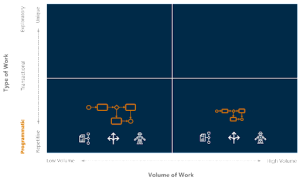
Transactional work is the sweet spot for Workflow Automation. Typically transactional work can at least be partially defined upfront, and usually requires a prescribed flow as well as defined roles to complete the work. This is where Workflow Automation can shine. Other automation technologies may take a back seat to Workflow when it comes to Transactional work, or at least the understanding is automation will be led by Workflow for this type of work. Also, this Workflow is typically Sequential, rather than Ad-hoc or Dynamic in nature. Ad-hoc and Dynamic Workflow tend to be more relevant for Exploratory work, which we’ll discuss in the next section. However, this does not mean Transactional work cannot have Ad-hoc and Dynamic Workflows, it just means Sequential Workflow is more prevalent for this type of work.
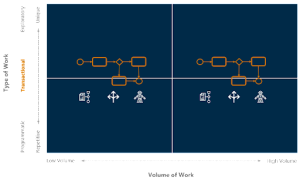
Exploratory work is, by definition, unpredictable. The very word explore brings to mind going off and doing exciting and unforeseeable things. Every company has a ton of exploratory work. This work is typically the highest value work done at a company. This area houses your knowledge workers, and we predict this is where automation will eventually drive all human workers to live. Applying prescribed automation to exploratory work becomes much more difficult than the other types of work, if not impossible. Think about the work your executive teams typically do. Mostly, it is making decisions and delegating work based on their experience and knowledge of the business. Trying to predict those decisions and actions through highly controlled Sequential Workflows would be a recipe for disaster.
However, where Workflow can play a role in Exploratory work is with Dynamic Case or Ad-Hoc Workflows. As we described in the previous paragraph Exploratory work is unpredictable and requires high levels of human discretion. However, there can be pre-defined tasks and smaller Workflows within Exploratory work. It is just that it is difficult to predict when these pre-defined tasks and smaller Workflows will be needed. That is why Exploratory work is an excellent fit for Dynamic Case or Ad-Hoc Workflows.
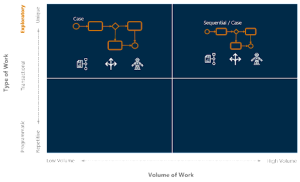
As we mentioned in the first paragraph of this blog, this is Part 4 of a series of blogs (Part 1; Part 2; Part 3) on taking a holistic approach to automation when leveraging Digital Business Automation. Hopefully, this blog will help you avoid what we see happening in some automation efforts; Workflow as a panacea for all things automation related. Workflow is outstanding in some situations, but you need an overall approach to automation which allows you to take a look at the big picture and determine what type of work you’re doing, and then what automation, if any, fits best with that work.